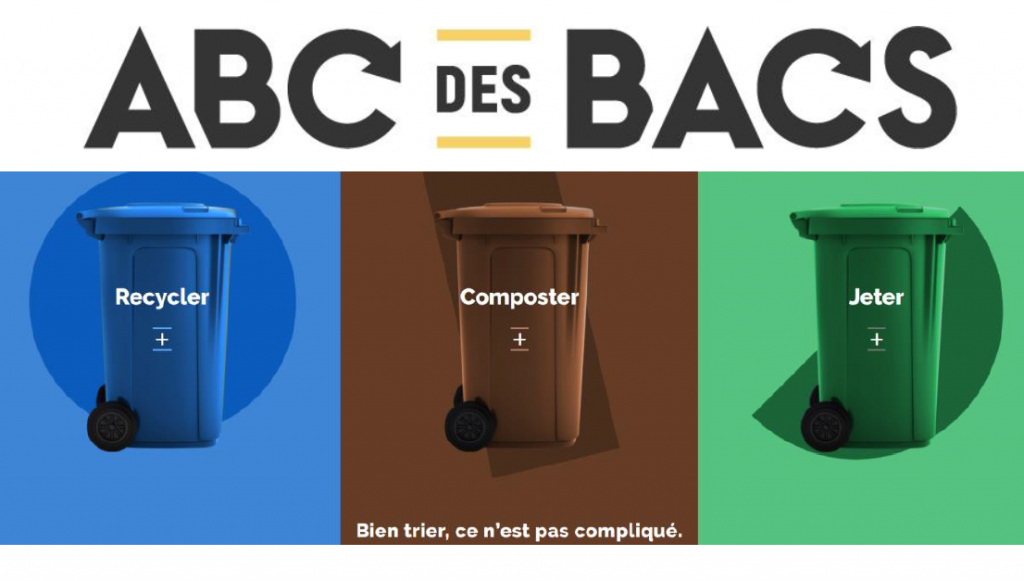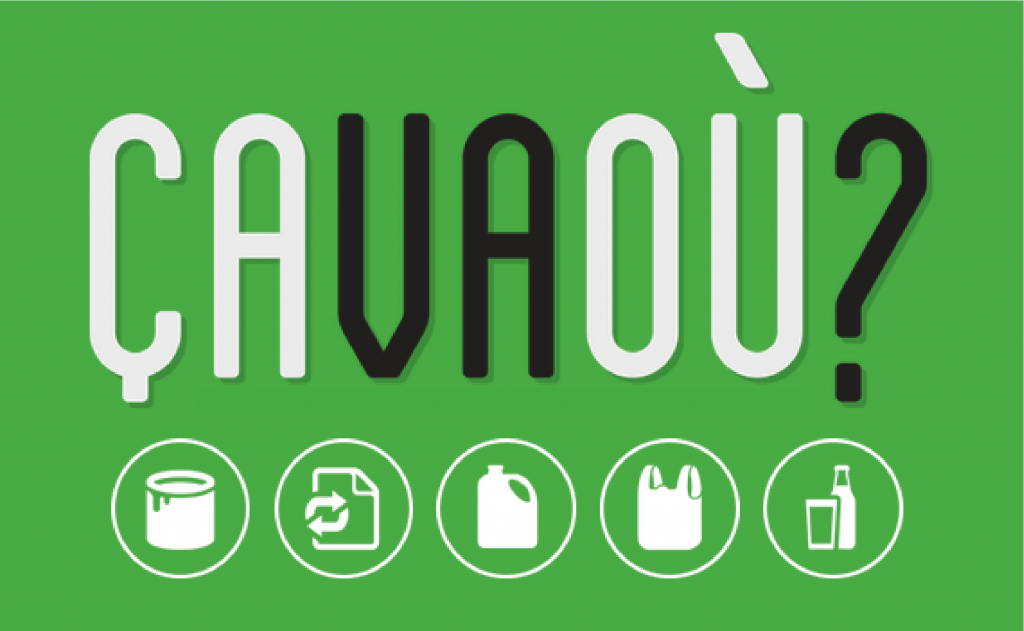What goes where?
Need help figuring out which material goes in which bin or how to dispose of a particular material?
Here are 4 research tools to help you:
1. abcdesbacs.com
4. binimpact.ca
 Compostable materials
Compostable materials
👉 Compost, how and why?
From the kitchen :
* Fruits and vegetables (full, peels, cores, pieces, corn cobs, etc.);
* Coffee grains, coffee filters and tea bags;
* Bread, cake, cookies, cereals, pasta;
* Cooked meat, fish, fish bones, sea food shells, poultry and bones;
* Milk products (cheese, butter, etc.);
* Egg shells.
From the yard :
* Grass (the ideal is still to leave the grass on the ground after cutting it);
* Dead leaves
* Flowers, plants, weeds and all gardening residues
* Bark, wood shavings and saw dust, roots.
Others :
* Pet litter;
* Paper and cardboard soiled by food; (napkin, paper towel, pizza box, etc.);
* Cold ashes (fire out for 7 days);
* Feathers, fur and hair;
* Dust from the dryer.
- Checklist and tips for collecting compostable materials
- Composter sans bougonner c’est tellement simple
- Composter sans bougonner – les vers
- L’ABC du bac – les matières organiques
 Recyclable materials
Recyclable materials
The recyclable materials that you put in your blue bin are sent to Régie de récupération de l’Estrie.
It is important to know that a sorting center is not used to separate waste from recyclable materials but to sort recyclable materials into different categories. This is why it is important to do a good sorting at home, at school and at work and to choose the right bin.
Paper and cardboard, flexible plastic, rigid plastic, metal and glass.
👉 Consult the complete list of recyclable materials
 Ultimate waste
Ultimate waste
Ultimate waste is found at the very end of the waste recovery cycle and is neither recyclable, nor compostable, nor reusable. Since this waste of human consumption cannot be used in any way and cannot have a second life, the ultimate option is to destroy it or bury it.
Ecocentres and large ultimate waste items
For more information on ecocentres and large ultimate waste, see the corresponding pages.



